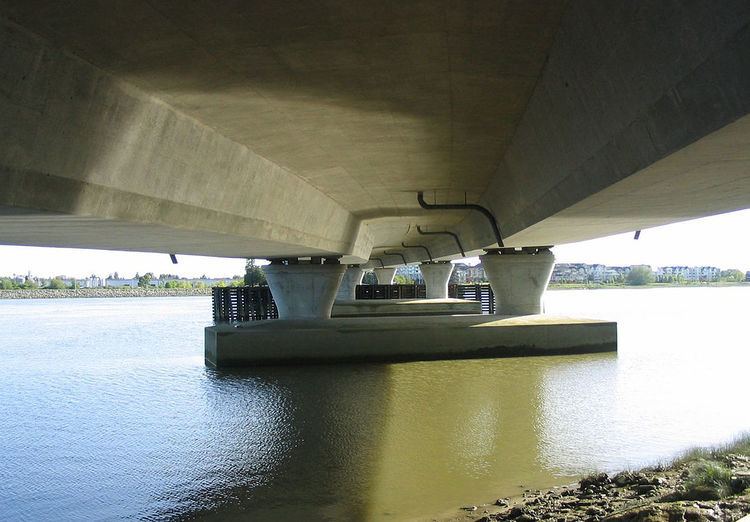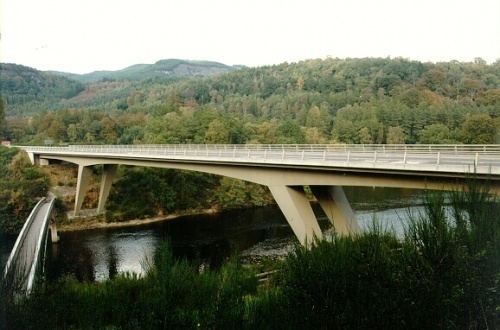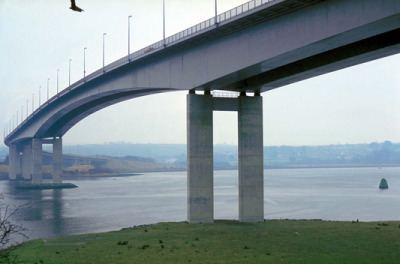Movable Possible | Span range Medium Design effort High | |
 | ||
Falsework required Yes, if cast-in-place reinforced or prestressed concrete is used, which is typical for freeway overpasses Similar Girder bridge, segmental bridge, beam bridge, Plate girder bridge, Orthotropic deck | ||
Design of a single cell rcc box girder bridge
A box girder bridge is a bridge in which the main beams comprise girders in the shape of a hollow box. The box girder normally comprises either prestressed concrete, structural steel, or a composite of steel and reinforced concrete. The box is typically rectangular or trapezoidal in cross-section. Box girder bridges are commonly used for highway flyovers and for modern elevated structures of light rail transport. Although normally the box girder bridge is a form of beam bridge, box girders may also be used on cable-stayed bridges and other forms.
Contents
- Design of a single cell rcc box girder bridge
- Wadi hanifa segmental box girder bridge riyadh
- Development of steel box girders
- Construction
- Advantages
- Disadvantages
- References

Wadi hanifa segmental box girder bridge riyadh
Development of steel box girders

The box girder bridge was a popular choice during the roadbuilding expansion of the 1960s and many new bridge projects were in progress simultaneously. A serious blow to this use was a sequence of three serious disasters, when new bridges collapsed in 1970 (West Gate Bridge and Cleddau Bridge) and 1971 (South Bridge (Koblenz)). Fifty-one people were killed in these failures, leading in the UK to the formation of the Merrison Committee and considerable investment in new research into steel box girder behaviour.

Most of the bridges still under construction at this time were delayed for investigation of the basic design principle. Some were abandoned and rebuilt as a different form of bridge altogether. Most of those that remained as box girder bridges, such as Erskine Bridge (illus.), were either redesigned, or had additional stiffening added later. Some bridges were strengthened a few years after opening and then further strengthened years later, although this was often due to increased traffic load as much as better design standards. The Irwell Valley bridge of 1970 was strengthened in 1970 and again in 2000.
Construction

If made of concrete, box girder bridges may be cast in place using falsework supports, removed after completion, or in sections if a segmental bridge. Box girders may also be prefabricated in a fabrication yard, then transported and emplaced using cranes.
For steel box girders, the girders are normally fabricated off site and lifted into place by crane, with sections connected by bolting or welding. If a composite concrete bridge deck is used, it is often cast in-place using temporary Falsework supported by the steel girder.
Either form of bridge may also be installed using the technique of incremental launching. Under this method, gantry cranes are often used to place new segments onto the completed portions of the bridge until the bridge superstructure is completed.
